Principles of Pediatric Nursing Caring for Children Ball 6th Edition Test Bank
$38.00
Name: Principles of Pediatric Nursing Caring for Children
Author: Ball Bindler
Edition: 6th
ISBN-10: 0133898067
Type: Test Bank
- Description
- Reviews (0)
Description
You will receive this product immediate after placing the order
Principles of Pediatric Nursing Caring for Children Ball 6th Edition Test Bank
Principles of Pediatric Nursing Caring for Children Ball Bindler 6th Edition Test Bank
***THIS IS NOT THE ACTUAL BOOK. YOU ARE BUYING the Test Bank in e-version of the following book***
Name: Principles of Pediatric Nursing Caring for Children
Author: Ball Bindler
Edition: 6th
ISBN-10: 0133898067
Type: Test Bank
– The test bank is what most professors use an a reference when making exams for their students, which means there’s a very high chance that you will see a very similar, if not exact the exact, question in the test!
– The file is either in .doc, .padf, excel, or zipped in the package and can easily be read on PCs and Macs.
– Delivery is INSTANT. You can download the files IMMEDIATELY once payment is done.
If you have any questions, please feel free to contact us. Our response is the fastest. All questions will always be answered in 6 hours., most of the time within 30mins
We also faced similar difficulities when we were students, and we understand how you feel.
But now, with the Principles of Pediatric Nursing Caring for Children Test Bank, you will be able to
* Anticipate the type of the questions that will appear in your exam.
* Reduces the hassle and stress of your student life.
* Improve your studying and also get a better grade!
* Get prepared for examination questions.
*Can save you time and help you understand the material.
This is the quality of service we are providing and we hope to be your helper.
Delivery is in the next moment. Test Bank is accurate.
Prepare to receive your Principles of Pediatric Nursing Caring for Children Test Bank in the next moment.
If you have any questions, or would like a receive a sample chapter before your purchase, please contact us at inquiry@testbanksafe.com
Principles of Pediatric Nursing Caring for Children Test Bank
Principles of Pediatric Nursing Caring for Children Ball Bindler 6th Edition Test Bank ISBN: 0133898067
Ball/Bindler/Cowen, Principles of Pediatric Nursing: Caring for Children 6th Edition Test Bank
Chapter 3
Question 1
Type: MCSA
Personalized health care for health promotion and maintenance can be based on environmental factors and which other item?
1. The genes a person inherited
2. Common conditions with known treatment strategies
3. Teaching strategies
4. The health of the person
Correct Answer: 1
Rationale 1: Personalized health care is based on environmental factors and the genes the person inherited. Common conditions and the current health of the person are not part of personalized health care. Teaching strategies are not part of personalized health care.
Rationale 2: Personalized health care is based on environmental factors and the genes the person inherited. Common conditions and the current health of the person are not part of personalized health care. Teaching strategies are not part of personalized health care.
Rationale 3: Personalized health care is based on environmental factors and the genes the person inherited. Common conditions and the current health of the person are not part of personalized health care. Teaching strategies are not part of personalized health care.
Rationale 4: Personalized health care is based on environmental factors and the genes the person inherited. Common conditions and the current health of the person are not part of personalized health care. Teaching strategies are not part of personalized health care.
Global Rationale: Personalized health care is based on environmental factors and the genes the person inherited. Common conditions and the current health of the person are not part of personalized health care. Teaching strategies are not part of personalized health care.
Cognitive Level: Applying
Client Need: Health Promotion and Maintenance
Client Need Sub:
Nursing/Integrated Concepts: Nursing Process: Assessment
Learning Outcome: LO 3.1 Explain the role of genetic and genomic concepts in health promotion, disease prevention, screening, diagnostics, selection of treatment, and monitoring of treatment effectiveness.
Question 2
Type: MCSA
A three-generation pedigree is constructed around the designated “index” patient. Based on this knowledge which explanation of the term proband is the most accurate?
1. The “index” patient has the disorder of interest
2. One parent of the “index” patient has the disorder of interest
3. The “index” patient does not have the disorder of interest
4. Siblings of the “index” patient do not have the disorder of interest
Correct Answer: 1
Rationale 1: The proband indicates that the “index” patient has the disorder of interest. A consultand is an “index” patient seeking genetic counseling for a disorder she is not affected by at present.
Rationale 2: The proband indicates that the “index” patient has the disorder of interest. A consultand is an “index” patient seeking genetic counseling for a disorder she is not affected by at present.
Rationale 3: The proband indicates that the “index” patient has the disorder of interest. A consultand is an “index” patient seeking genetic counseling for a disorder she is not affected by at present.
Rationale 4: The proband indicates that the “index” patient has the disorder of interest. A consultand is an “index” patient seeking genetic counseling for a disorder she is not affected by at present.
Global Rationale: The proband indicates that the “index” patient has the disorder of interest. A consultand is an “index” patient seeking genetic counseling for a disorder she is not affected by at present.
Cognitive Level: Applying
Client Need: Health Promotion and Maintenance
Client Need Sub:
Nursing/Integrated Concepts: Nursing Process: Assessment
Learning Outcome: LO 3.2 Elicit a family health history and construct a genetic pedigree.
Question 3
Type: MCSA
When discussing inheritance with parents of a child with a genetic disorder, which statement by the parents indicates they understand inheritance risk?
1. “This child has a genetic disorder, so future children will not have it.”
2. “Each pregnancy carries the same percent risk of inheritance.”
3. “I cannot have any more children, because they will all have the disorder.”
4. “There is a good chance future children will be normal.”
Correct Answer: 2
Rationale 1: Each pregnancy carries the same percent risk of having a child with the disorder in question. The other statements indicate the need for further education regarding inheritance risk.
Rationale 2: Each pregnancy carries the same percent risk of having a child with the disorder in question. The other statements indicate the need for further education regarding inheritance risk.
Rationale 3: Each pregnancy carries the same percent risk of having a child with the disorder in question. The other statements indicate the need for further education regarding inheritance risk.
Rationale 4: Each pregnancy carries the same percent risk of having a child with the disorder in question. The other statements indicate the need for further education regarding inheritance risk.
Global Rationale: Each pregnancy carries the same percent risk of having a child with the disorder in question. The other statements indicate the need for further education regarding inheritance risk.
Cognitive Level: Analyzing
Client Need: Health Promotion and Maintenance
Client Need Sub:
Nursing/Integrated Concepts: Nursing Process: Assessment
Learning Outcome: LO 3.3 Incorporate knowledge of genetic and genomic influences and risk factors into assessment, planning, and implementation of nursing care.
Question 4
Type: MCSA
Parents of a child with a congenital heart defect ask what the chances are of recurrence in future pregnancies. Which response by the nurse is the most appropriate?
1. “There is a 50% chance of recurrence in a future pregnancy.”
2. “There is a very low chance of recurrence.”
3. “It should not happen again with a future pregnancy.”
4. “There is a strong chance of recurrence.”
Correct Answer: 2
Rationale 1: There is a very low rate of recurrence with congenital heart defects. The other statements are not appropriate for the nurse to make in this situation.
Rationale 2: There is a very low rate of recurrence with congenital heart defects. The other statements are not appropriate for the nurse to make in this situation.
Rationale 3: There is a very low rate of recurrence with congenital heart defects. The other statements are not appropriate for the nurse to make in this situation.
Rationale 4: There is a very low rate of recurrence with congenital heart defects. The other statements are not appropriate for the nurse to make in this situation.
Global Rationale: There is a very low rate of recurrence with congenital heart defects. The other statements are not appropriate for the nurse to make in this situation.
Cognitive Level: Applying
Client Need: Health Promotion and Maintenance
Client Need Sub:
Nursing/Integrated Concepts: Nursing Process: Implementation
Learning Outcome: LO 3.4 Integrate basic genetic and genomic concepts into child and family education.
Question 5
Type: MCSA
A family with a child who had a cleft lip and palate at birth are planning another pregnancy. What intervention should be recommended prior to conception?
1. A genetic family history
2. A family pedigree
3. A genetic physical assessment
4. A maternal health history
Correct Answer: 1
Rationale 1: A genetic family history is recommended when there is history of a congenital anomaly, such as cleft lip and palate. A pedigree is a more comprehensive family history, and could follow a genetic family history if needed. The previous anomaly is already known, so a genetic history would be recommended over a genetic physical assessment. A maternal health history is not comprehensive enough for this case.
Rationale 2: A genetic family history is recommended when there is history of a congenital anomaly, such as cleft lip and palate. A pedigree is a more comprehensive family history, and could follow a genetic family history if needed. The previous anomaly is already known, so a genetic history would be recommended over a genetic physical assessment. A maternal health history is not comprehensive enough for this case.
Rationale 3: A genetic family history is recommended when there is history of a congenital anomaly, such as cleft lip and palate. A pedigree is a more comprehensive family history, and could follow a genetic family history if needed. The previous anomaly is already known, so a genetic history would be recommended over a genetic physical assessment. A maternal health history is not comprehensive enough for this case.
Rationale 4: A genetic family history is recommended when there is history of a congenital anomaly, such as cleft lip and palate. A pedigree is a more comprehensive family history, and could follow a genetic family history if needed. The previous anomaly is already known, so a genetic history would be recommended over a genetic physical assessment. A maternal health history is not comprehensive enough for this case.
Global Rationale: A genetic family history is recommended when there is history of a congenital anomaly, such as cleft lip and palate. A pedigree is a more comprehensive family history, and could follow a genetic family history if needed. The previous anomaly is already known, so a genetic history would be recommended over a genetic physical assessment. A maternal health history is not comprehensive enough for this case.
Cognitive Level: Applying
Client Need: Health Promotion and Maintenance
Client Need Sub:
Nursing/Integrated Concepts: Nursing Process: Planning
Learning Outcome: LO 3.3 Incorporate knowledge of genetic and genomic influences and risk factors into assessment, planning, and implementation of nursing care.
Question 6
Type: MCSA
A father is a known carrier of an X-linked condition, and asks when he will know whether his newborn son has the condition he carries. Which response by the nurse is the most appropriate?
1. “Genetic studies have been ordered, and they will take about a week to determine the results.”
2. “We plan to run additional tests this afternoon, and should have results by the end of the day.”
3. “Your son cannot have the condition because the condition is X-linked and cannot be passed on to him.”
4. “There is a 50% chance you passed it on, but further tests are not recommended until he is a month old.”
Correct Answer: 3
Rationale 1: A male child does not inherit any X chromosome from the father; therefore, the male child will not have the condition.
Rationale 2: A male child does not inherit any X chromosome from the father; therefore, the male child will not have the condition.
Rationale 3: A male child does not inherit any X chromosome from the father; therefore, the male child will not have the condition.
Rationale 4: A male child does not inherit any X chromosome from the father; therefore, the male child will not have the condition.
Global Rationale: A male child does not inherit any X chromosome from the father; therefore, the male child will not have the condition.
Cognitive Level: Applying
Client Need: Health Promotion and Maintenance
Client Need Sub:
Nursing/Integrated Concepts: Nursing Process: Implementation
Learning Outcome: LO 3.4 Integrate basic genetic and genomic concepts into child and family education.
Question 7
Type: MCSA
A student nurse asks, “What is carrier testing?” Which response by the nurse educator is most appropriate to answer the student nurse’s question?
1. “Carrier testing involves testing an asymptomatic individual for carrier status for a genetic condition.”
2. “Carrier testing is used to establish a diagnosis of a genetic disorder in an individual who is symptomatic or has had a positive screening test.”
3. “Carrier testing is testing to identify a fetus with a genetic disease or condition. Some prenatal testing is offered routinely; other testing may be initiated due to family history or maternal factors.”
4. “Carrier testing follows in vitro fertilization (IVF) testing to identify embryos with a particular genetic condition.”
Correct Answer: 1
Rationale 1: Carrier testing involves testing an asymptomatic individual for carrier status for a genetic condition. Diagnostic testing is testing to identify a fetus with a genetic disease or condition. Some prenatal testing is offered routinely; other testing may be initiated due to family history or maternal factors. Prenatal testing is testing to identify a fetus with a genetic disease or condition. Some prenatal testing is offered routinely; other testing may be initiated due to family history or maternal factors. Pre-implantation testing follows in vitro fertilization (IVF) testing to identify embryos with a particular genetic condition.
Rationale 2: Carrier testing involves testing an asymptomatic individual for carrier status for a genetic condition. Diagnostic testing is testing to identify a fetus with a genetic disease or condition. Some prenatal testing is offered routinely; other testing may be initiated due to family history or maternal factors. Prenatal testing is testing to identify a fetus with a genetic disease or condition. Some prenatal testing is offered routinely; other testing may be initiated due to family history or maternal factors. Pre-implantation testing follows in vitro fertilization (IVF) testing to identify embryos with a particular genetic condition.
Rationale 3: Carrier testing involves testing an asymptomatic individual for carrier status for a genetic condition. Diagnostic testing is testing to identify a fetus with a genetic disease or condition. Some prenatal testing is offered routinely; other testing may be initiated due to family history or maternal factors. Prenatal testing is testing to identify a fetus with a genetic disease or condition. Some prenatal testing is offered routinely; other testing may be initiated due to family history or maternal factors. Pre-implantation testing follows in vitro fertilization (IVF) testing to identify embryos with a particular genetic condition.
Rationale 4: Carrier testing involves testing an asymptomatic individual for carrier status for a genetic condition. Diagnostic testing is testing to identify a fetus with a genetic disease or condition. Some prenatal testing is offered routinely; other testing may be initiated due to family history or maternal factors. Prenatal testing is testing to identify a fetus with a genetic disease or condition. Some prenatal testing is offered routinely; other testing may be initiated due to family history or maternal factors. Pre-implantation testing follows in vitro fertilization (IVF) testing to identify embryos with a particular genetic condition.
Global Rationale: Carrier testing involves testing an asymptomatic individual for carrier status for a genetic condition. Diagnostic testing is testing to identify a fetus with a genetic disease or condition. Some prenatal testing is offered routinely; other testing may be initiated due to family history or maternal factors. Prenatal testing is testing to identify a fetus with a genetic disease or condition. Some prenatal testing is offered routinely; other testing may be initiated due to family history or maternal factors. Pre-implantation testing follows in vitro fertilization (IVF) testing to identify embryos with a particular genetic condition.
Cognitive Level: Applying
Client Need: Health Promotion and Maintenance
Client Need Sub:
Nursing/Integrated Concepts: Nursing Process: Implementation
Learning Outcome: LO 3.6 Discuss the significance of recent advances in human genetics and genomics and their impact on healthcare delivery.
Question 8
Type: MCSA
Which genetic test would be best for the prospective father who recently had a positive screen for a genetic condition?
1. Carrier testing
2. Predictive testing
3. Diagnostic testing
4. Prenatal testing
Correct Answer: 3
Rationale 1: Diagnostic testing is best for an individual who has a positive screen for a genetic disorder. Prenatal testing would be done with a pregnancy. Carrier testing is done with an asymptomatic individual who wishes to know whether he or she is a carrier of a condition. Predictive testing predicts the likelihood of a condition later in life.
Rationale 2: Diagnostic testing is best for an individual who has a positive screen for a genetic disorder. Prenatal testing would be done with a pregnancy. Carrier testing is done with an asymptomatic individual who wishes to know whether he or she is a carrier of a condition. Predictive testing predicts the likelihood of a condition later in life.
Rationale 3: Diagnostic testing is best for an individual who has a positive screen for a genetic disorder. Prenatal testing would be done with a pregnancy. Carrier testing is done with an asymptomatic individual who wishes to know whether he or she is a carrier of a condition. Predictive testing predicts the likelihood of a condition later in life.
Rationale 4: Diagnostic testing is best for an individual who has a positive screen for a genetic disorder. Prenatal testing would be done with a pregnancy. Carrier testing is done with an asymptomatic individual who wishes to know whether he or she is a carrier of a condition. Predictive testing predicts the likelihood of a condition later in life.
Global Rationale: Diagnostic testing is best for an individual who has a positive screen for a genetic disorder. Prenatal testing would be done with a pregnancy. Carrier testing is done with an asymptomatic individual who wishes to know whether he or she is a carrier of a condition. Predictive testing predicts the likelihood of a condition later in life.
Cognitive Level: Applying
Client Need: Health Promotion and Maintenance
Client Need Sub:
Nursing/Integrated Concepts: Nursing Process: Assessment
Learning Outcome: LO 3.6 Discuss the significance of recent advances in human genetics and genomics and their impact on healthcare delivery.
Question 9
Type: MCSA
The nurse is preparing a three-generation family pedigree. A student asks the nurse the significance of the darkened circles. Which response by the nurse is the most appropriate?
1. “Males unaffected by the disease.”
2. “Males affected by the disease.”
3. “Females unaffected by the disease.”
4. “Females affected by the disease.”
Correct Answer: 4
Rationale 1: A circle is the standard symbol for a female, and darkening the circle represents a female affected by a disease. A male is represented by a square.
Rationale 2: A circle is the standard symbol for a female, and darkening the circle represents a female affected by a disease. A male is represented by a square.
Rationale 3: A circle is the standard symbol for a female, and darkening the circle represents a female affected by a disease. A male is represented by a square.
Rationale 4: A circle is the standard symbol for a female, and darkening the circle represents a female affected by a disease. A male is represented by a square.
Global Rationale: A circle is the standard symbol for a female, and darkening the circle represents a female affected by a disease. A male is represented by a square.
Cognitive Level: Applying
Client Need: Health Promotion and Maintenance
Client Need Sub:
Nursing/Integrated Concepts: Nursing Process: Assessment
Learning Outcome: LO 3.2 Elicit a family health history and construct a genetic pedigree.
Question 10
Type: MCSA
A family desires genetic testing for their adolescent. What response by the clinic nurse is appropriate?
1. “The child is a minor and cannot give consent.”
2. “It is not advisable because insurance does not pay for this test.”
3. “Let me discuss this with the adolescent and then we can discuss it more fully.”
4. “There is a chance the adolescent might be discriminated against because of the test.”
Correct Answer: 3
Rationale 1: The adolescent is old enough to understand the pros and cons of testing. It would be advisable to discuss the matter with the adolescent and then more fully with the parents. That the minor is not able to give consent is true, but this answer cuts off discussion and is not appropriate. Insurance and discrimination can play a role in the decision, but still are not the appropriate answers because they do not address the issue of the request for testing.
Rationale 2: The adolescent is old enough to understand the pros and cons of testing. It would be advisable to discuss the matter with the adolescent and then more fully with the parents. That the minor is not able to give consent is true, but this answer cuts off discussion and is not appropriate. Insurance and discrimination can play a role in the decision, but still are not the appropriate answers because they do not address the issue of the request for testing.
Rationale 3: The adolescent is old enough to understand the pros and cons of testing. It would be advisable to discuss the matter with the adolescent and then more fully with the parents. That the minor is not able to give consent is true, but this answer cuts off discussion and is not appropriate. Insurance and discrimination can play a role in the decision, but still are not the appropriate answers because they do not address the issue of the request for testing.
Rationale 4: The adolescent is old enough to understand the pros and cons of testing. It would be advisable to discuss the matter with the adolescent and then more fully with the parents. That the minor is not able to give consent is true, but this answer cuts off discussion and is not appropriate. Insurance and discrimination can play a role in the decision, but still are not the appropriate answers because they do not address the issue of the request for testing.
Global Rationale: The adolescent is old enough to understand the pros and cons of testing. It would be advisable to discuss the matter with the adolescent and then more fully with the parents. That the minor is not able to give consent is true, but this answer cuts off discussion and is not appropriate. Insurance and discrimination can play a role in the decision, but still are not the appropriate answers because they do not address the issue of the request for testing.
Cognitive Level: Analyzing
Client Need: Health Promotion and Maintenance
Client Need Sub:
Nursing/Integrated Concepts: Nursing Process: Implementation
Learning Outcome: LO 3.3 Incorporate knowledge of genetic and genomic influences and risk factors into assessment, planning, and implementation of nursing care.
Question 11
Type: MCSA
A nurse is planning an education session on genetic testing. What would not concern the nurse when planning the session?
1. Cultural beliefs
2. Religious beliefs
3. Family values
4. Insurance reimbursement
Correct Answer: 4
Rationale 1: Cultural and religious beliefs and family values are all considerations when planning a teaching session on genetic testing. Insurance plays a factor in determining whether the test is done, but is not a consideration in the teaching session itself.
Rationale 2: Cultural and religious beliefs and family values are all considerations when planning a teaching session on genetic testing. Insurance plays a factor in determining whether the test is done, but is not a consideration in the teaching session itself.
Rationale 3: Cultural and religious beliefs and family values are all considerations when planning a teaching session on genetic testing. Insurance plays a factor in determining whether the test is done, but is not a consideration in the teaching session itself.
Rationale 4: Cultural and religious beliefs and family values are all considerations when planning a teaching session on genetic testing. Insurance plays a factor in determining whether the test is done, but is not a consideration in the teaching session itself.
Global Rationale: Cultural and religious beliefs and family values are all considerations when planning a teaching session on genetic testing. Insurance plays a factor in determining whether the test is done, but is not a consideration in the teaching session itself.
Cognitive Level: Applying
Client Need: Health Promotion and Maintenance
Client Need Sub:
Nursing/Integrated Concepts: Nursing Process: Planning
Learning Outcome: LO 3.4 Integrate basic genetic and genomic concepts into child and family education.
Question 12
Type: MCSA
A nurse is planning care for a family who is undergoing genetic screening. Which expected outcome will the nurse include in the plan of care for this family?
1. Decide whether social issues outweigh genetic issues.
2. Make a voluntary decision related to genetic health issues.
3. Not consider the influence of genetics on health promotion.
4. Look closely at the present before considering the future as it relates to genetic screening.
Correct Answer: 2
Rationale 1: The goal of nursing care is to allow informed, voluntary decisions when it comes to genetic screening.
Rationale 2: The goal of nursing care is to allow informed, voluntary decisions when it comes to genetic screening.
Rationale 3: The goal of nursing care is to allow informed, voluntary decisions when it comes to genetic screening.
Rationale 4: The goal of nursing care is to allow informed, voluntary decisions when it comes to genetic screening.
Global Rationale: The goal of nursing care is to allow informed, voluntary decisions when it comes to genetic screening.
Cognitive Level: Applying
Client Need: Health Promotion and Maintenance
Client Need Sub:
Nursing/Integrated Concepts: Nursing Process: Planning
Learning Outcome: LO 3.5 Understand implications of genome science on the nursing role with particular attention to ethical, legal, and social issues.
Question 13
Type: MCSA
The nurse notes some dysmorphic facial features when examining a toddler in the well child clinic. Which measurement taken by the nurse would not be considered when looking at dysmorphic facial features?
1. Interpupillary distance
2. Intercanthal distance
3. The distance from the outer canthus to the pinna
4. Outer cantus distance
Correct Answer: 3
Rationale 1: The distance from the outer canthus to the pinna does not apply to the face. The other measurements would be necessary when evaluating facial dysmorphic features.
Rationale 2: The distance from the outer canthus to the pinna does not apply to the face. The other measurements would be necessary when evaluating facial dysmorphic features.
Rationale 3: The distance from the outer canthus to the pinna does not apply to the face. The other measurements would be necessary when evaluating facial dysmorphic features.
Rationale 4: The distance from the outer canthus to the pinna does not apply to the face. The other measurements would be necessary when evaluating facial dysmorphic features.
Global Rationale: The distance from the outer canthus to the pinna does not apply to the face. The other measurements would be necessary when evaluating facial dysmorphic features.
Cognitive Level: Applying
Client Need: Health Promotion and Maintenance
Client Need Sub:
Nursing/Integrated Concepts: Nursing Process: Assessment
Learning Outcome: LO 3.3 Incorporate knowledge of genetic and genomic influences and risk factors into assessment, planning, and implementation of nursing care.
Question 14
Type: MCSA
When conducting a health history on a late school-age client, what would the nurse document as a dysmorphic feature?
1. A repaired cleft palate
2. A 10% burn to the face
3. A severed finger
4. A flat anterior fontanel
Correct Answer: 1
Rationale 1: A dysmorphic feature was present at birth. A cleft palate, even though repaired, would be included in a health history as a dysmorphic feature. The burns and a severed digit were not present at birth, and would not be considered dysmorphic. A soft fontanel would be considered normal.
Rationale 2: A dysmorphic feature was present at birth. A cleft palate, even though repaired, would be included in a health history as a dysmorphic feature. The burns and a severed digit were not present at birth, and would not be considered dysmorphic. A soft fontanel would be considered normal.
Rationale 3: A dysmorphic feature was present at birth. A cleft palate, even though repaired, would be included in a health history as a dysmorphic feature. The burns and a severed digit were not present at birth, and would not be considered dysmorphic. A soft fontanel would be considered normal.
Rationale 4: A dysmorphic feature was present at birth. A cleft palate, even though repaired, would be included in a health history as a dysmorphic feature. The burns and a severed digit were not present at birth, and would not be considered dysmorphic. A soft fontanel would be considered normal.
Global Rationale: A dysmorphic feature was present at birth. A cleft palate, even though repaired, would be included in a health history as a dysmorphic feature. The burns and a severed digit were not present at birth, and would not be considered dysmorphic. A soft fontanel would be considered normal.
Cognitive Level: Applying
Client Need: Health Promotion and Maintenance
Client Need Sub:
Nursing/Integrated Concepts: Nursing Process: Implementation
Learning Outcome: LO 3.3 Incorporate knowledge of genetic and genomic influences and risk factors into assessment, planning, and implementation of nursing care.
Question 15
Type: MCMA
When completing a pedigree, which factors should be included?
Standard Text: Select all that apply.
1. Full siblings only
2. Begin with the proband
3. Mark each generation with a Roman numeral
4. Include at least three generations
5. Use only standard pedigree symbols
Correct Answer: 2,3,4,5
Rationale 1: It is important to include half-siblings in addition to full siblings, as half-siblings have half the genetic history that the full siblings do. The other answers are all important to include in a pedigree.
Rationale 2: It is important to include half-siblings in addition to full siblings, as half-siblings have half the genetic history that the full siblings do. The other answers are all important to include in a pedigree.
Rationale 3: It is important to include half-siblings in addition to full siblings, as half-siblings have half the genetic history that the full siblings do. The other answers are all important to include in a pedigree.
Rationale 4: It is important to include half-siblings in addition to full siblings, as half-siblings have half the genetic history that the full siblings do. The other answers are all important to include in a pedigree.
Rationale 5: It is important to include half-siblings in addition to full siblings, as half-siblings have half the genetic history that the full siblings do. The other answers are all important to include in a pedigree.
Global Rationale: It is important to include half-siblings in addition to full siblings, as half-siblings have half the genetic history that the full siblings do. The other answers are all important to include in a pedigree.
Cognitive Level: Applying
Client Need: Health Promotion and Maintenance
Client Need Sub:
Nursing/Integrated Concepts: Nursing Process: Planning
Learning Outcome: LO 3.2 Elicit a family health history and construct a genetic pedigree.
Be the first to review “Principles of Pediatric Nursing Caring for Children Ball 6th Edition Test Bank”
You must be logged in to post a review.



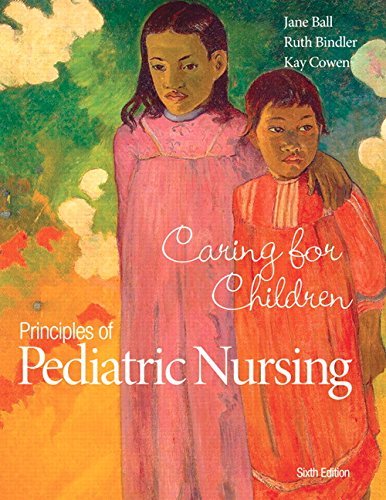

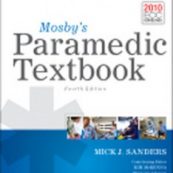
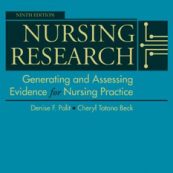
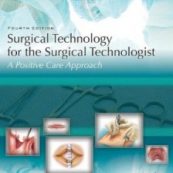


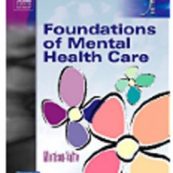

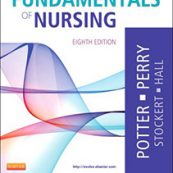
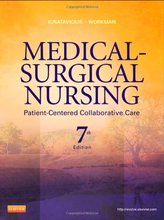
Reviews
There are no reviews yet.